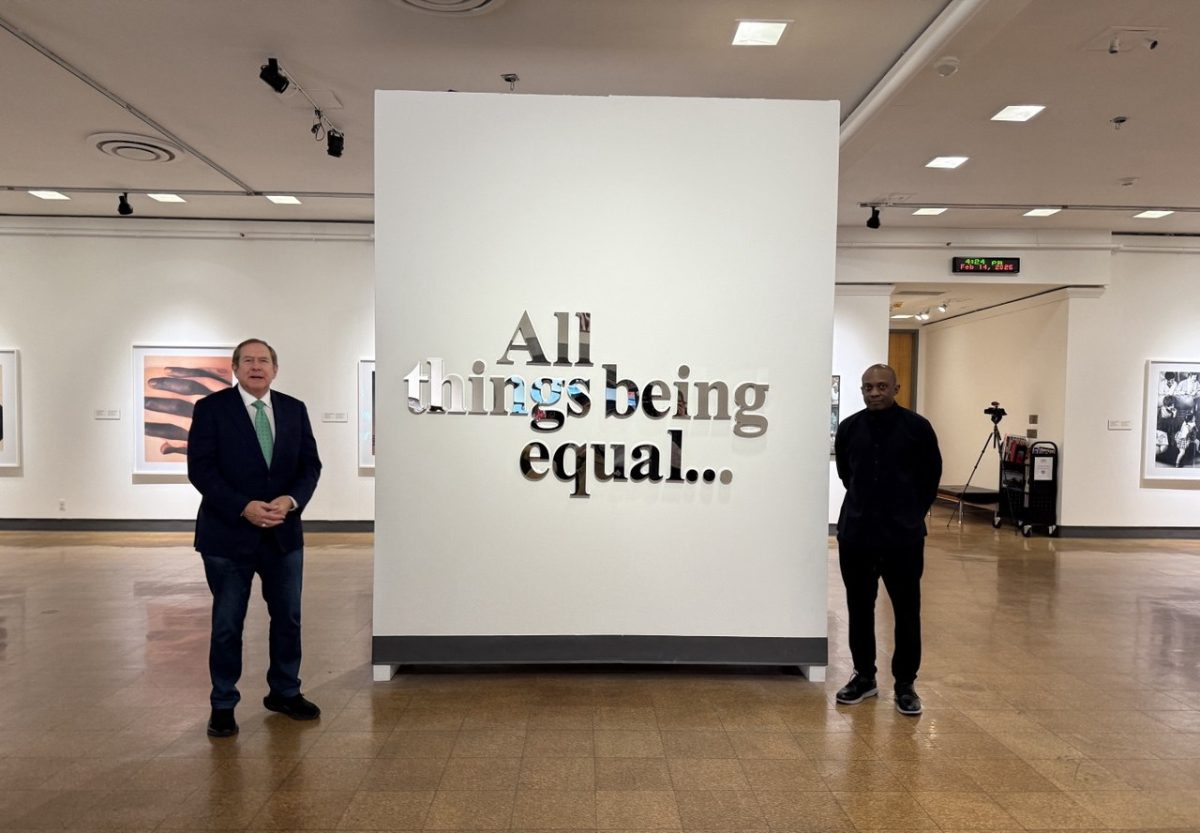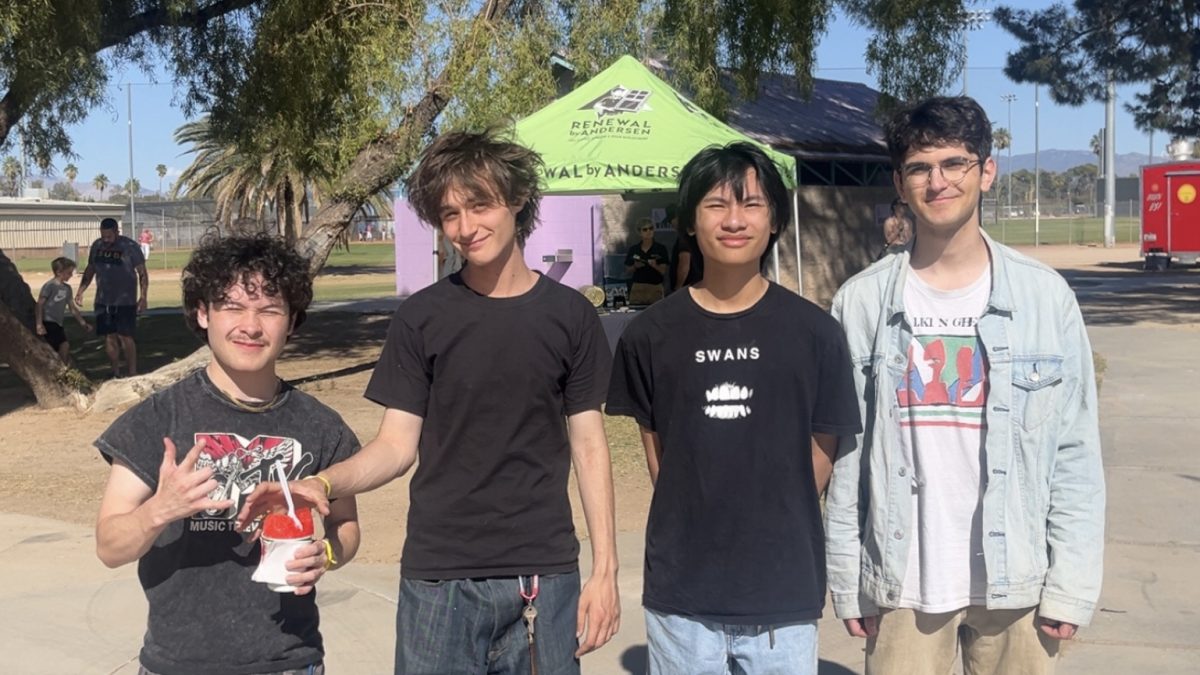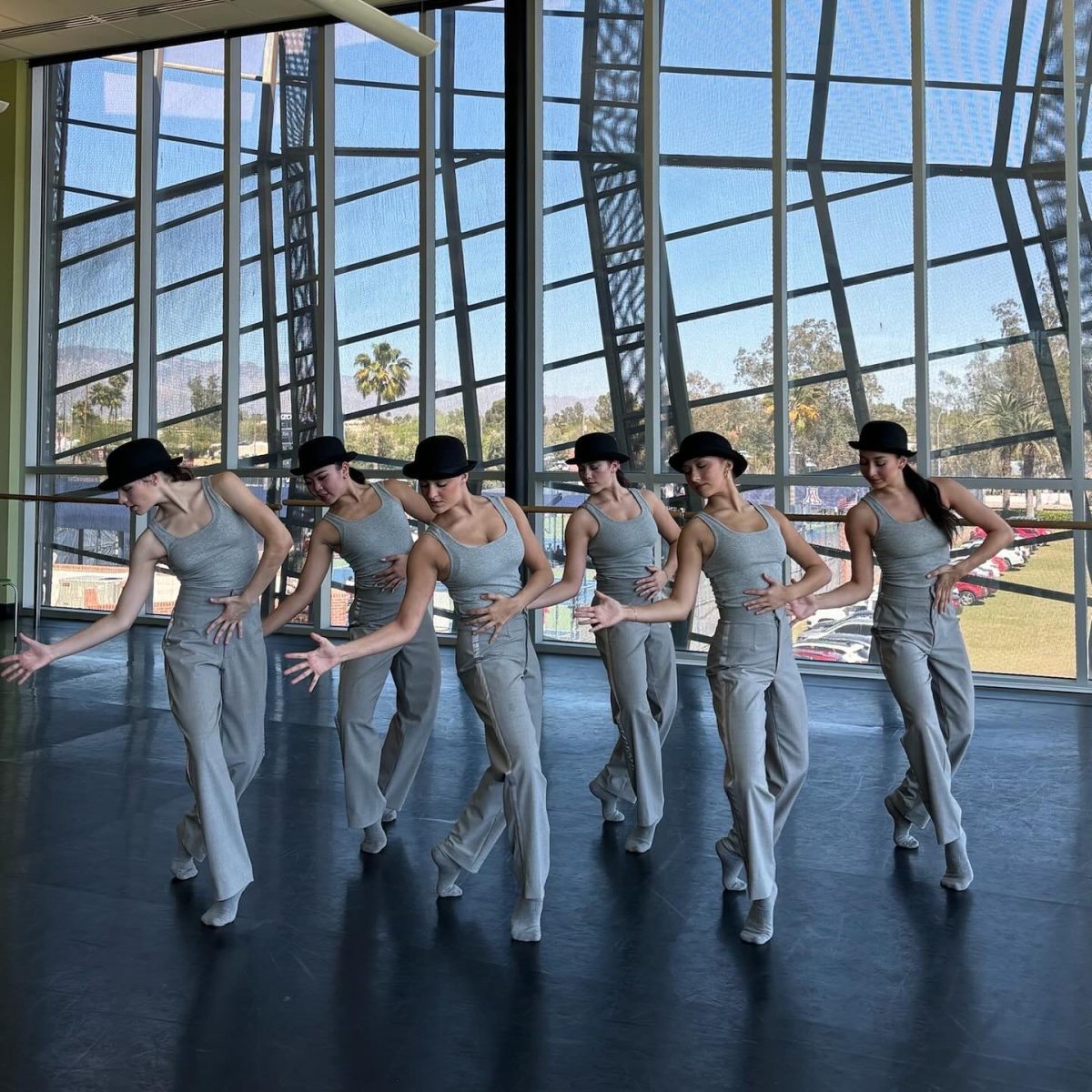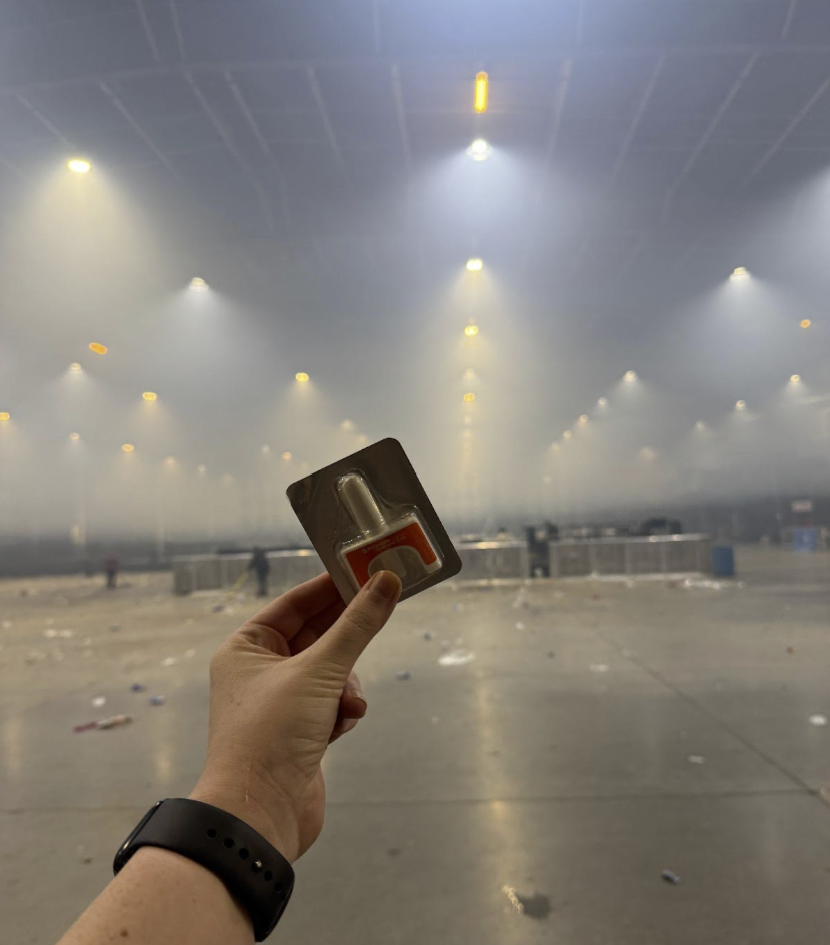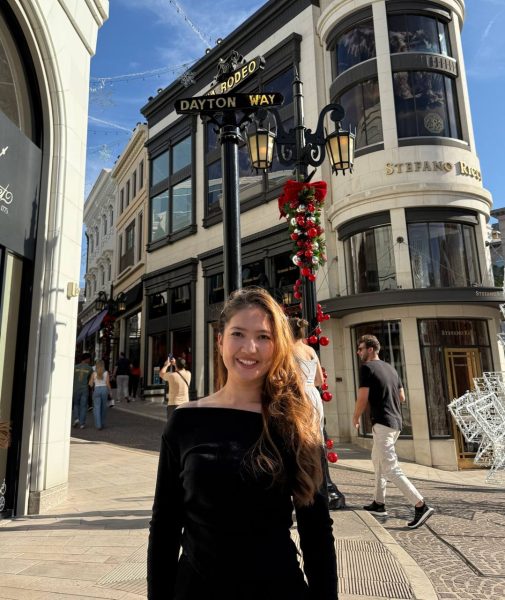The “LOVERULES” exhibition by Hank Willis Thomas, from the collection of Jordan D. Schnitzer and his family, is now on display at the University of Arizona Museum of Art. The exhibition boldly confronts the complex intersection of race, identity and consumerism, delivering an art experience that resonates with both historical and contemporary issues.
Visitors at the exhibit praised “LOVERULES” for its enthusiastic exploration of social themes that are sometimes overlooked.
“His message is very powerful, particularly now in this era where we see racism rising back up,” said Barbara Becker, a retired professor. “It’s terrifying to look at some of this and realize that we’re facing some of this all over again.”
The interactive elements of “LOVERULES,” such as light manipulation, dual perspectives and perspective shifting, have also left an important impact on visitors. Rather than simply observing, this work allows people to connect more deeply with the art, visitor Ava Burke said.
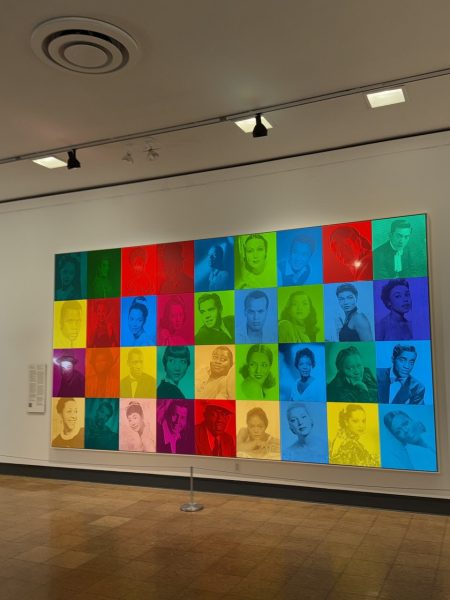
Portraits in this exhibit are visible after visitors hold the flash.
“The exhibit’s contemporary resonance is undeniable, inviting people to reflect on how far we’ve come, and how far we still have to go in addressing race and inequality,” she said.
Volunteer docent Rand Tapscott said there is also a deeper philosophical intent behind the exhibition because of the connection between this collection and the artist’s own tragedy – the death of his cousin.
“What Hank is really telling you is… love is an action word, and it’s about what you give, not what you receive,” he said.
While some of the work may appear challenging or even depressing at first, Tapscott said he thinks it encourages viewers to reflect on how they contribute to messages about love and power circulating in society.
For Violet Rose Arma, co-curator of the exhibition, the art’s contribution to the ongoing conversation about race and identity is clear.
“A lot of the topics he focuses on were relevant in the past, with the civil rights movement and the slave trade, and those themes are still preexistent today,” she said.
Arma said the artist’s skill in repurposing advertisements from every year between 1915 and 2015 that depict white femininity in popular culture into works of art speaks to the way those issues continue to pervade modern society.
“The exhibition is not merely an academic exercise but a visual challenge to both past and present forms of exploitation,” she said.
The museum’s careful curation also contributed to the exhibition’s effectiveness, said visitor Barbara Crews. The pieces were thoughtfully arranged, she said, and the decision to place advertisements targeting white women in one room was “very impactful.”
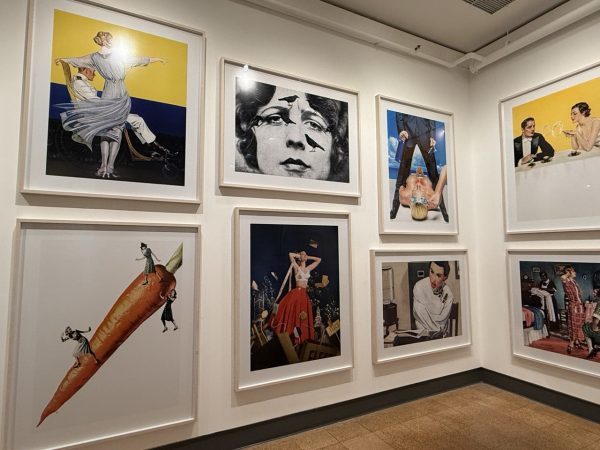
The exhibit shows the advertisements used to depict white femininity in popular culture.
Thomas’s “Unbranding” technique analyzes how mainstream America perceives virtue, power, beauty, privilege and desire as well as how those qualities are used to sell products to white women, who are then marketed as products themselves.
“Making visitors encounter the disturbing reality of advertising, an artistic genre that frequently both reflects and supports societal frameworks is one of the exhibition’s key strengths,” she said.
“Perhaps what stands out most about “LOVERULES” is its ability to make complex, often painful themes accessible while also creating space for introspection,” Becker added. “There’s a lot of food for thought, so to speak. There’s a lot of things that make you stop and reflect.” Through its reflective installations, examination of identity as a brand, or its timely commentary on social justice, “LOVERULES” serves as a powerful reminder that art remains one of the most powerful vehicles for addressing the hidden messages that shape our society.
The UA Museum of Art will host the “LOVERULES” exhibition through Saturday, June 21.
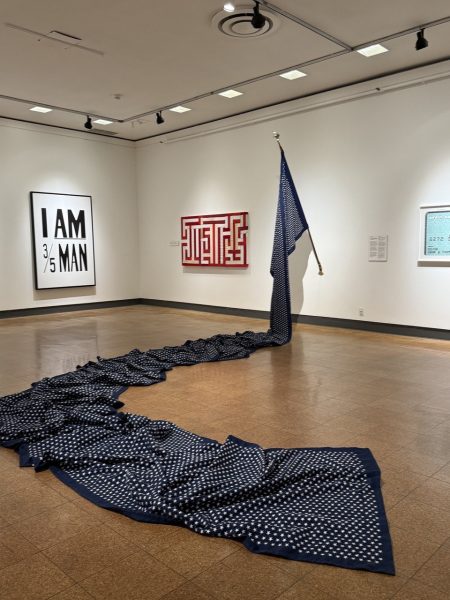
A complex design from the “LOVERULES” collection, the flag’s colorful display spreads out on the floor in a visually engaging story.
Arizona Sonoran News is a news service of the University of Arizona School of Journalism.



